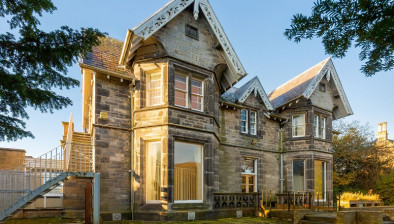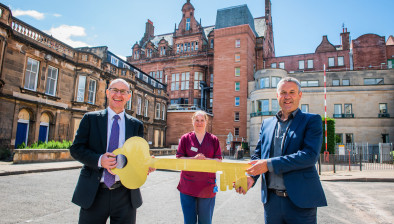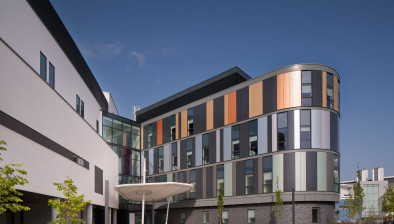‘Design flaws to blame’ for Royal Hospital for Sick Children delay
 Pressure to meet deadlines and “seriously flawed” designs are to blame for a six month delay to the opening of the Royal Hospital for Sick Children in Edinburgh, according to an architect behind the project.
Pressure to meet deadlines and “seriously flawed” designs are to blame for a six month delay to the opening of the Royal Hospital for Sick Children in Edinburgh, according to an architect behind the project.
Robert Menzies has claimed that construction of the £150 million hospital was rushed despite repeated warnings of potential design problems.
IHS Lothian Ltd, the consortium building the Royal Hospital for Sick Children and Department of Clinical Neurosciences, last week informed NHS Lothian that they are reviewing the construction timetable for the project which was scheduled to open autumn 2017.
The announcement followed news that the Dunne Group and JB Brickwork, two of the companies working on construction of the hospital, entered administration and provisional liquidation respectively, resulting in a temporary pause to their work streams.
However, in a letter to The Herald, experienced healthcare architect Mr Menzies said clinicians’ complaints that the layout would be “totally useless” and “completely unacceptable” were ignored.
He said columns blocking the middle of rooms, lack of daylight and difficulties of trying to use the central atrium as a dual purpose outpatients’ waiting room and exhibition space with patients’ cinema were among the flaws.
Mr Menzies, who was also involved in the design of the new Royal Hospital for Sick Children in Glasgow, was working for BMJ Architects in Glasgow when the firm was hired by NHS Lothian, jointly with Nightingale Associates, to draw up an “exemplar design” for the new Edinburgh children’s hospital.
The exemplar is a template design that is used as a guide layout by architects subsequently bidding for a construction contract.
However, Mr Menzies said the exemplar process was complicated by numerous redesigns as the health board switched from requesting only a children’s hospital to incorporating an extension of the existing adult neurological department into the site. It then dropped the neurological unit before re-incorporating it again when the project went from being publicly-funded to a PFI scheme.
Speaking to The Herald, Mr Menzies, who is now retired, said he became increasingly concerned that flaws in the exemplar design were not being ironed out because of pressure to keep to schedule.
He said: “There was pressure to get this up and running. The problem with the exemplar design system is that you’re rushing to meet a deadline and you don’t have time to work things out.”
However, Mr Menzies, who went on to compete unsuccessfully for the construction contract, said the NHS project managers warned bidders they would lose points for diverging from the exemplar layout.
He said he believes his team lost out because it was “quicker and easier” for the health board to stick to the original layout.
NHS Lothian confirmed the hospital will not open as originally scheduled due to “unavoidable technical construction problems”, poor weather and financial problems affecting two of the contractors, though a spokeswoman said the “technical construction problems” were unrelated to the building’s design.
IHS Lothian Ltd is yet to provide a revised programme however NHS Lothian said early indications suggest that the building will now open to patients in spring 2018.




















